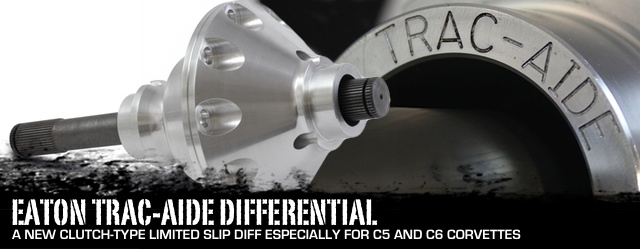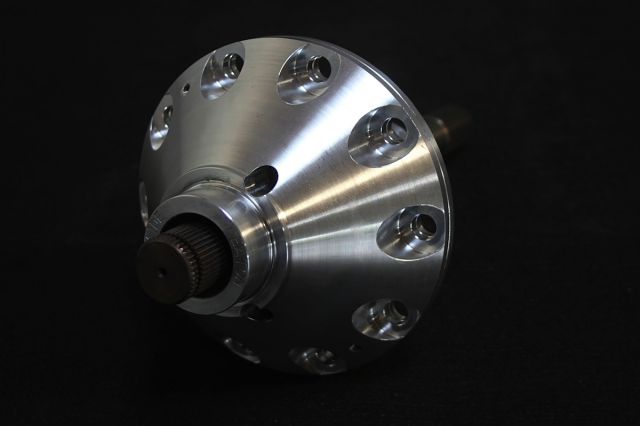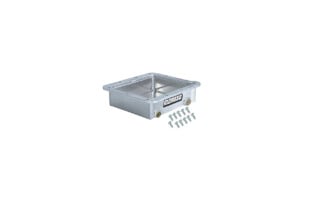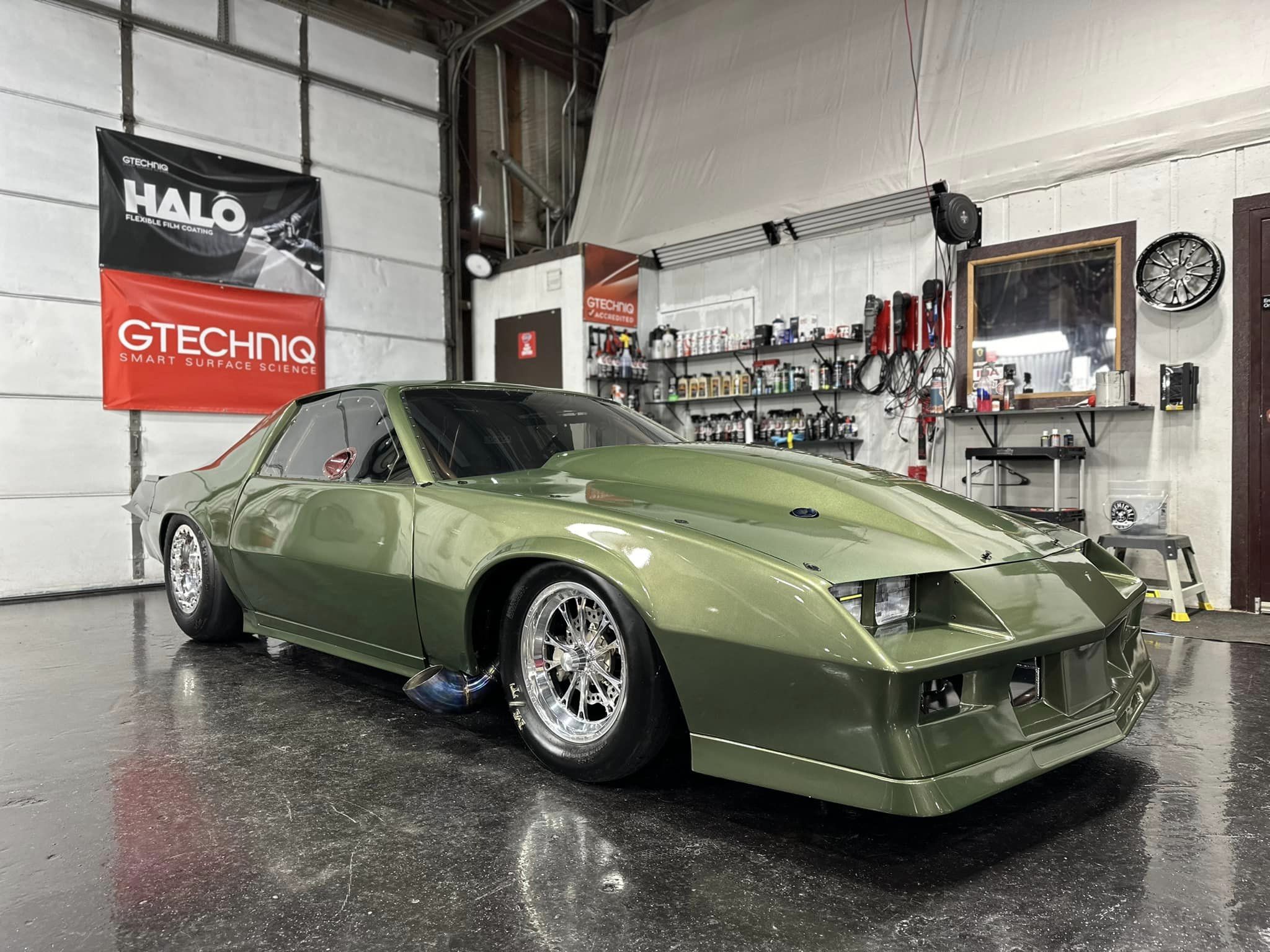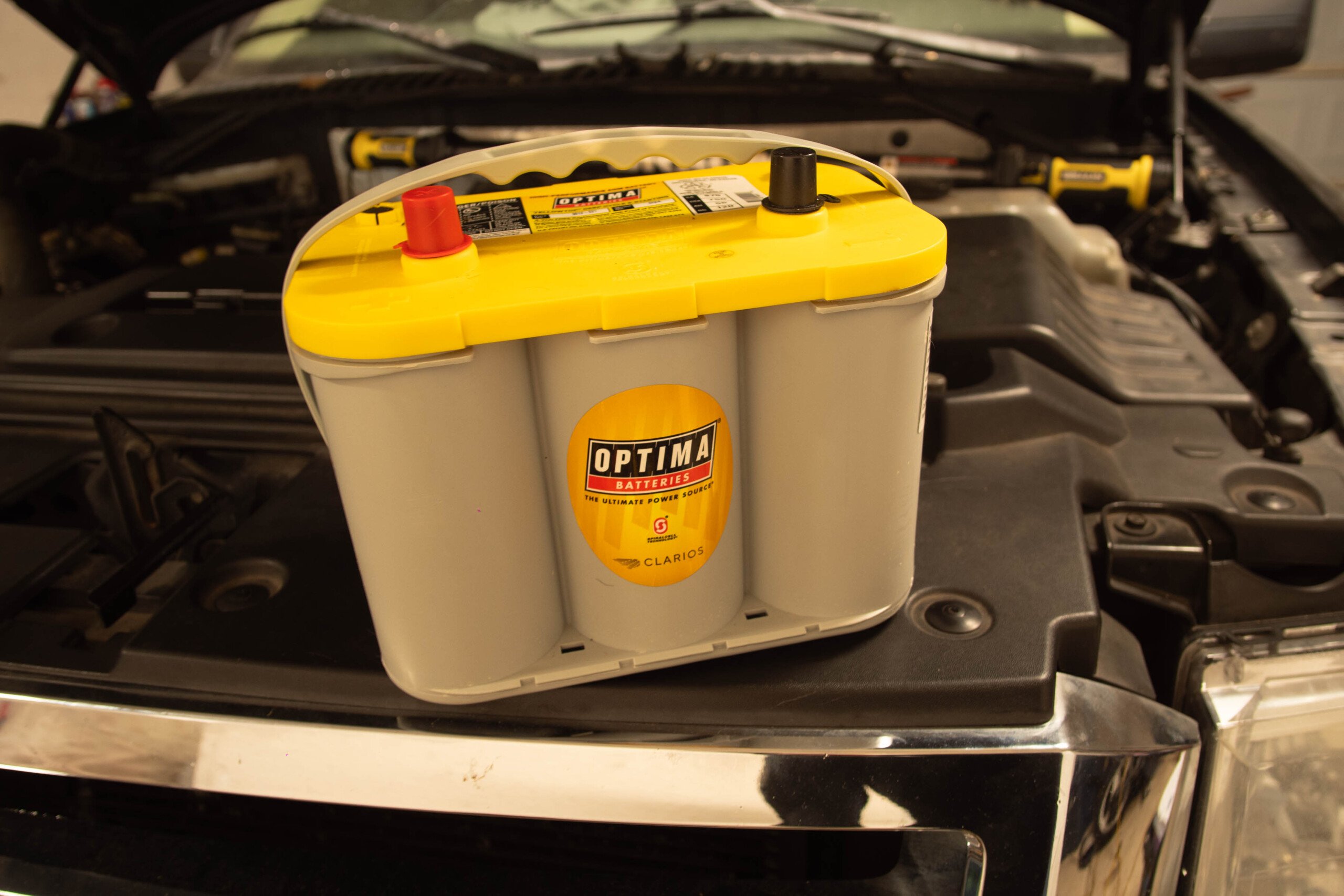As the last stop for your Corvette’s power before it hits the drive wheels, your car’s differential is a very important component in your drivetrain setup. While late-model Corvettes of the C5 and C6 varieties certainly have improved factory-standard limited slip differentials compared to earlier generations, no owner can be too careful about setting their car up with the proper diff for the use (and abuse) their car is most likely to get.

Similar in operation to traditional Posi-tractions, the new Eaton Corvette C5/C6 Carbon Clutch Limited Slip Differential has some key improvements.
That’s why the creative minds behind Eaton Automotive Group have come up with a brand new limited slip differential with carbon clutches specifically designed for performance C5 and C6 Corvettes. Not only does this new system give you the traction you’re looking for on the street and track, it’s also fully rebuildable and especially compliments modified and high-horsepower vehicles.
How It Works
In order to fully understand the benefits of the new Eaton Corvette C5/C6 Carbon Clutch LSD (part #PS-70-P-20001), we must first recognize how a limited slip differential works.
Commonly known as a Posi-traction rearend (actually a trademark of the Eaton corporation), a LSD splits the engine’s torque in two ways via a number of gears and two axle shafts, allowing each drive wheel to spin at two different speeds under normal circumstances. This is important for things like cornering, when one wheel must spin faster than the other to make a successful turn. This is a feature of all differentials – some race cars use what’s known as a “spool” in place of a differential, which mechanically locks both axle shafts together, but makes the wheels bind and drag whenever they’re forced to turn at different speeds in a turn.

Trac-Aide indeed, this new LSD from Eaton helps with your traction needs while improving the all-around performance of your late-model Corvette.
Where the limited slip differential differs from less complicated systems is with the addition of a mechanism that creates a resisting torque. Unlike in open differentials where the same amount of torque, based on the least amount needed to spin one of the wheels, is applied to both drive wheels, the addition of this resisting mechanism allows different amounts of torque to be applied to each wheel.
This unit is completely unique where it has a three-pinion design -Barney Gwozdz, Eaton
This is important in limited traction situations, such as on ice or slick pavement at the track. With the resisting mechanism in place, limited slip differentials will apply the same amount of torque to both wheels as long as the wheels are spinning at the same speed. Once they aren’t, such as in a turn or limited traction situation, however, the resisting mechanism will kick in and fight against the difference in speed between the two wheels.
In order for one drive wheel to continue to spin faster than the other, it must overpower the resisting mechanism. This is especially beneficial in limited traction situations, where one drive wheel starts to “slip” or spin faster. In such situations, the opposite wheel (with better traction) will still get enough power to move forward, although it won’t be the full power of the vehicle, prompting the car to pull through less than optimal traction situations.
Clutch-Driven Limited Slip Differentials
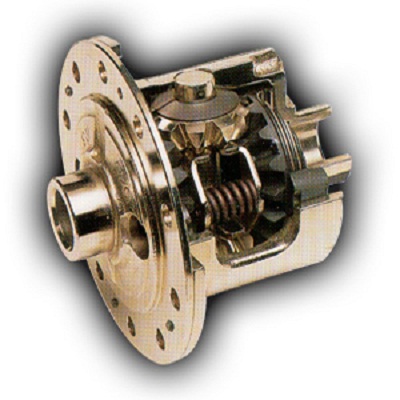
A clutch-type limited slip differential adds a spring pack and a set of clutches to the open differential design, allowing two different amounts of torque to be transferred to your drive wheels.
The most common resisting mechanism found in limited slip differentials is a clutch-driven mechanism which makes use of a spring pack and set of clutches. With this configuration, the springs press the side gears against the clutches while both drive wheels are spinning at the same speed. This causes both side gears to move in unison with the differential’s cage, which is bolted to the ring gear that delivers power from the driveshaft. However, once one wheel starts to spin faster, the internal mechanism applies more clamp load to the clutches, causing a resistance that must be overpowered in order for one drive wheel to continue to spin faster than the other.
The amount of torque it takes to overcome the resistance of the clutches depends on the spring rate and material makeup of the clutches in your differential. The stiffer the springs or the higher the spring rate, the more torque that’s needed to overcome the resistance. Just the same, the more friction created by the material makeup of the clutches, the more torque your car will need to use to overcome the resistance created by them. The fact that torque characteristics (and how much single wheel spin is allowed) can be changed through different springs and altering the clutch friction material means that this kind of LSD can be “tuned” during the design stage for optimum performance in a particular application.
The Eaton Corvette C5/C6 Carbon Clutch LSD
So how does the new Eaton carbon clutch LSD for C5 and C6 Corvettes build on traditional limited slip technology? Well, for that answer we turned to Eaton Customer Support expert and Technical Specialist Barney Gwozdz.
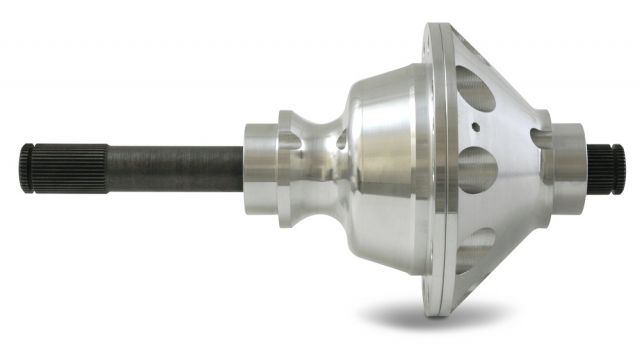
With a unique three-pinion design and net-forged gears, among other performance enhancements, the new C5/C6 LSD from Eaton gives even the toughest applications the perfect compliment to rearend setups.
“This unit is completely unique where it has a three-pinion design,” Gwozdz told us, rather than the typical two pinion gear layout. “It [also] has net-forged gears and we have our own plant that make these gears.” Net forging, a process that produces parts that require very little machining to reach their final, or “net” shape, creates gears that are both lightweight and strong.
In addition to the three-pinion design and gears manufactured in-house for durability, Gwozdz told us that the new C5/C6 LSD features custom-made alloy axle shafts, which are 30-percent stronger than factory axle shafts, and a T5 aluminum case, produced from the same material that is used in aircraft and aerospace components. The new Eaton differential is the only Posi of its kind to use this technologically-advanced material, and it’s lighter than the factory part it replaces.
 The carbon friction materials used in Eaton’s new LSD enhance the differential even further, giving the clutches more longevity by reducing wear. Made of the same substance that Indy Car brakes are made of, these clutches are as tough as they come and work exceptionally well under high pressure, adhering even better to one another as they heat up.
The carbon friction materials used in Eaton’s new LSD enhance the differential even further, giving the clutches more longevity by reducing wear. Made of the same substance that Indy Car brakes are made of, these clutches are as tough as they come and work exceptionally well under high pressure, adhering even better to one another as they heat up.
In addition to functioning better than a factory differential, the Corvette LSD’s durable components protect against wear longer, and ultimately, differential failure. “Adding durability alone speaks volumes,” Gwozdz told us. “It gives you an insurance policy.” Since a diff swap in a late-model Corvette is a labor-intensive process, having an LSD that holds up over time is particularly important.
It’s the durability and functionality of the LSD that makes it a great fit even for high-mileage, performance Corvette applications. If something does wear out or break in this differential, the unit is fully serviceable and rebuildable right down to the axle shafts, saving you money over the performance career of your Corvette.
Where Your Car Fits In This Equation
Adding advanced performance features to any Corvette will have its benefits, but the real fit for the new Eaton C5/C6 differential is with high-performance or modified Corvette applications. While a stronger and lighter differential has its place in any vehicle, Gwozdz told us that this particular differential especially shines in Corvettes being used in street/strip, racing, and high-speed cornering situations.
“You’re not going to see any adverse affects for everyday drivers,” Gwozdz explained. “But as they (Corvette owners) add more power, it’s easier to break the wheels loose. This is where it (the LSD) shines.”

While this diagram shows a regular two-pinion Posi rather than the improved C5/C6 design, it gives you a good idea of the layout of the gears, springs, and clutch packs.
You’re not going to see any adverse affects for everyday drivers – Barry Gwozdz
According to Gwozdz, it’s the ability to provide traction management in high-performance applications with less wear, stronger components and a lighter package that makes the new LSD the perfect unit for modified or ultra high-horsepower Corvette drivers. Manufactured for ultimate durability, the Eaton C5/C6 LSD is certainly a shining star in the performance aftermarket.
“We recognize the needs of Corvette drivers,” said Gwozdz. “[The new LSD also features] less rotational mass, which makes your horsepower go further. It doesn’t rob as much horsepower as the factory differential.”
What It Will Fit
Available for Corvettes from the 1997 through 2010 model years, the Eaton C5/C6 LSD is the perfect performance addition to your late-model car. In addition to base model Corvettes, the LSD will also fit on Z06 models with a fitment that accepts 3.15:1 or numerically-higher rearend gear ratios for all applications. The LSD is not currently available for 2011+ model year Corvettes, but Gwozdz told us that Eaton will be continuing their work on future Corvette applications.
The Eaton Corvette C5/C6 Carbon Clutch LSD is the latest and greatest in performance differentials for late model Corvettes. If you’re looking for a great way to compliment your existing or future performance upgrades, this is definitely a unit you should consider. Keep an eye out in the near future as we install this LSD in Project Y2k, our 2000 C5 Corvette project car, and test it out on the street, track, and dragstrip.



